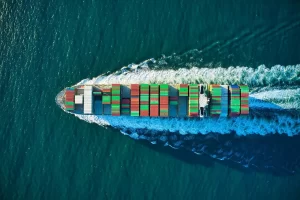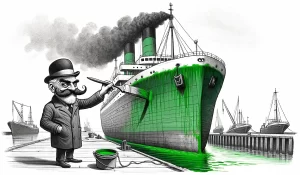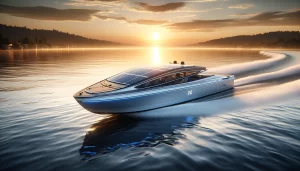Once considered a novelty, electric vehicles (EVs) are now becoming increasingly common as batteries improve and costs decline. The utility of EVs may go beyond just serving as a mode of transport however, they may actually serve as a valuable resource for the electrical grid. Is the same true for electric ships?
Batteries in EVs need to be charged periodically. This is easily done by simply plugging the vehicle into a charging station. Once connected to the charging station, energy flows from the electrical grid to the EV’s battery. This is what is referred to as ‘grid-to-vehicle’.
If electricity from the regional electrical grid is used, it’s going to come at cost. Some electric utilities prefer to charge their customers different prices, or rates, depending on the time of day, called time-of-use (ToU) pricing. For example, in the early evening when everyone is home watching Netflix or cooking dinner, electricity demand is high and rate payers experience peak pricing. In the wee hours of the morning when everyone is asleep and electricity demand is low, so are the rates. This pricing structure incentivizes people to use less electricity when it costs more, spreading out the electrical load throughout the day and smoothing peaks in demand.
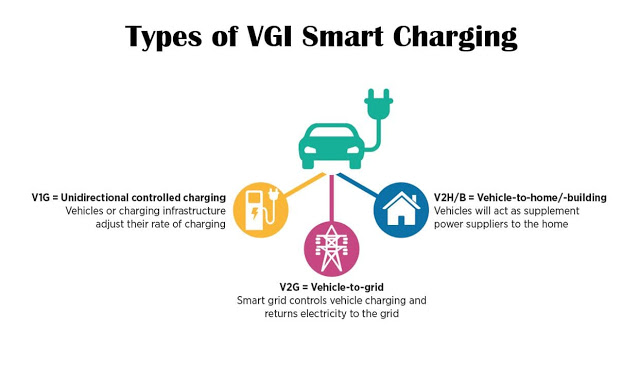
The ability to spread the electrical load throughout the day is desirable for an electric utility. Imagine if tens of thousands of EVs all decided to charge at the same time – this can be a sizable electric load. For example, a Nissan Leaf PLUS has a 62 kilowatt-hour (kWh) battery pack and can be charged in under 8 hours with regular slow-charging. This is about 5.4 kilowatt (kW) per vehicle; a fleet of ten thousand vehicles would be 54 megawatts (MW). If the EV is able to communicate with the grid, the vehicle can shift when it charges, known as smart-charging, or V1G. In California the EV fleet is estimated to be 700 megawatts of shiftable load.
EVs can go one step further to benefit the electric utility: they can serve as distributed energy storage systems. Remember that an EV is essentially a mobile battery: the Nissan Leaf PLUS stores as much energy as two average U.S. homes consume in a day. If the vehicle is fitted with the right hardware and software the EV can feed energy back into the grid, what is known as ‘vehicle-to-grid’ or V2G. In California the EV fleet is believed to represent over 4 gigawatt-hours (GWh) of battery storage capacity. To appreciate the size of this value, in 2017 all of California’s operational pumped hydro energy storage systems provided about 4,500 GWh of energy storage. Dam!
According to the Rocky Mountain Institute, EV smart charging and V2G provides other benefits to a utility, such as: avoiding investment in new grid infrastructure; providing grid services such as frequency regulation and power factor correction; optimizing existing grid assets and extending their useful life; or enabling greater integration of variable renewables like wind and solar.
But vehicles aren’t the only mode of transport being electrified; ships are also starting to make the transition too. While the electric vessel market is nascent, the maritime industry and utilities would be wise to consider EVs as a case study. Can a fleet of electric ships provide the same grid services as a fleet of EVs?
Ships come in many shapes and sizes and carry a variety of cargos such as fuel, grain, containers, or people. Some ships are used to carry cargo across oceans, while others never leave the sight of land. Not all of these vessel types are suitable for electrification. Large ocean-going container ships for example are unlikely to be fully electrified since the volume and weight of batteries required would be impractical.
In order to serve the grid as a distributed energy storage asset that might feed electricity to the grid, or ship-to-grid, an electric ships need to be in port and connected to smart charging infrastructure. The more often a vessel is connected the more likely it is to be there when it’s needed by the electric utility. Given this, there are several vessel types that are frequently in port and which might be suitable for ship-to-grid, such as tugs and pilot boats for example. Ferries are also among this select group, and given that Washington State is already committed to electrifying their ferry fleet, let’s consider this real world example.

Within the Washington State ferry fleet, each ship is slightly different in size, shape, or route and has a different energy demand profile. One of the vessels under consideration to be converted to an electric ship is the M/V Tacoma. The Tacoma operates between Seattle and Bainbridge Island, a distance of about nine miles. It makes this trip about 23 times a day, almost year-round. The energy required to traverse this distance is around 2,200 kWh. If we include a small safety factor and the other leg of the trip, the ship requires approximately 6,300 kWh of battery energy storage per voyage. This is equivalent to about 100 Nissan Leaf PLUS EVs, or enough energy to power six average American homes for a month for each voyage. For reference, six megawatt-hours (MWh) of energy storage is commensurate with other grid storage projects under development in Washington State. Puget Sound Energy intends to install a 5 MWh battery system on Bainbridge Island for example.

When it comes to grid services from distributed storage options like EVs or electric ships, utilization rate is important. Ferries have relatively high utilization, I estimate the Tacoma to be around 70% for example. Because it is in operation so often, it needs to charge frequently and quickly. The Tacoma uses fast-charging before each of its 23 crossings, each one taking about 17 minutes at a rate of around 9,571 kilowatts! Each of these 17 minute intervals adds-up to about eight hours a day spent charging, but there is little flexibility in shifting when the vessel charges. This makes it difficult for the ship operator to avoid peak rates when charging their vessels.
A fleet of EVs and the Tacoma both need roughly the same amount of energy, but the rate at which that energy is provided is crucial. The fleet of EVs would have a collective slow-charge power demand of around 400 kW if they all plugged in at the same time. If they were to be fast-charged, power needed would be closer to 2,000 kW. Conversely the Tacoma needs about 9,571 kW of power, nearly five times as much as the fleet, but for much shorter periods of time. Accommodating this spike in power demand at fixed intervals throughout the day can be troubling for an electric utility without prior planning. A fleet of electric ships on similar routes with similar power needs complicates things further.
From this quick investigation on the Tacoma, it seems unlikely that the Tacoma would provide much benefit to the electrical grid. It’s charging time can’t be shifted like an EV and it’s not connected long enough to provide power back into the grid. However the M/V Tacoma is just one ship on one particular route. Other vessel types, such as fishing boats, tour boats, or even small recreational boats with electric outboards might prove to be more valuable as distributed energy storage assets for the grid.
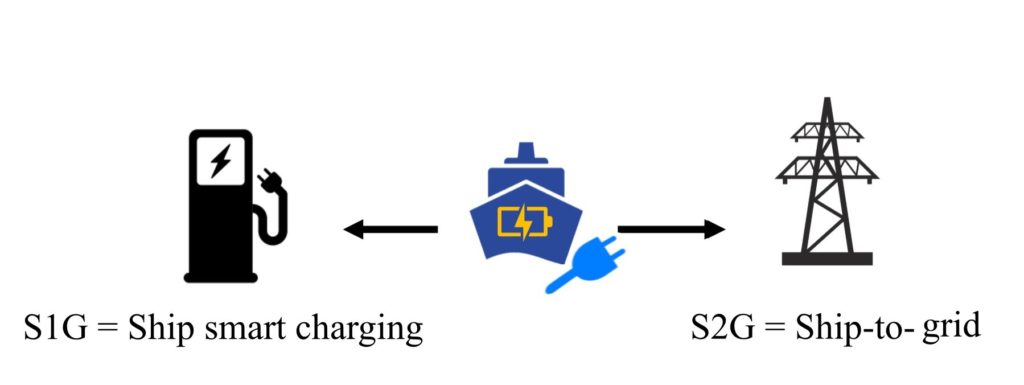
Electric ships are both a challenge and opportunity for electric utilities. With smart charging, some electric ships without fixed schedules could be charged when power is cheap. With the right hardware and software, ship-to-grid is also possible and one day electric ships could feed power back into the grid when demand spikes, potentially helping the utility avoid unnecessary energy storage capacity investments. For a grid-operator, electric ships could be valuable flexible energy storage or a major headache. To avoid the latter, it’s imperative that the maritime industry and electric utilities start to work together.

